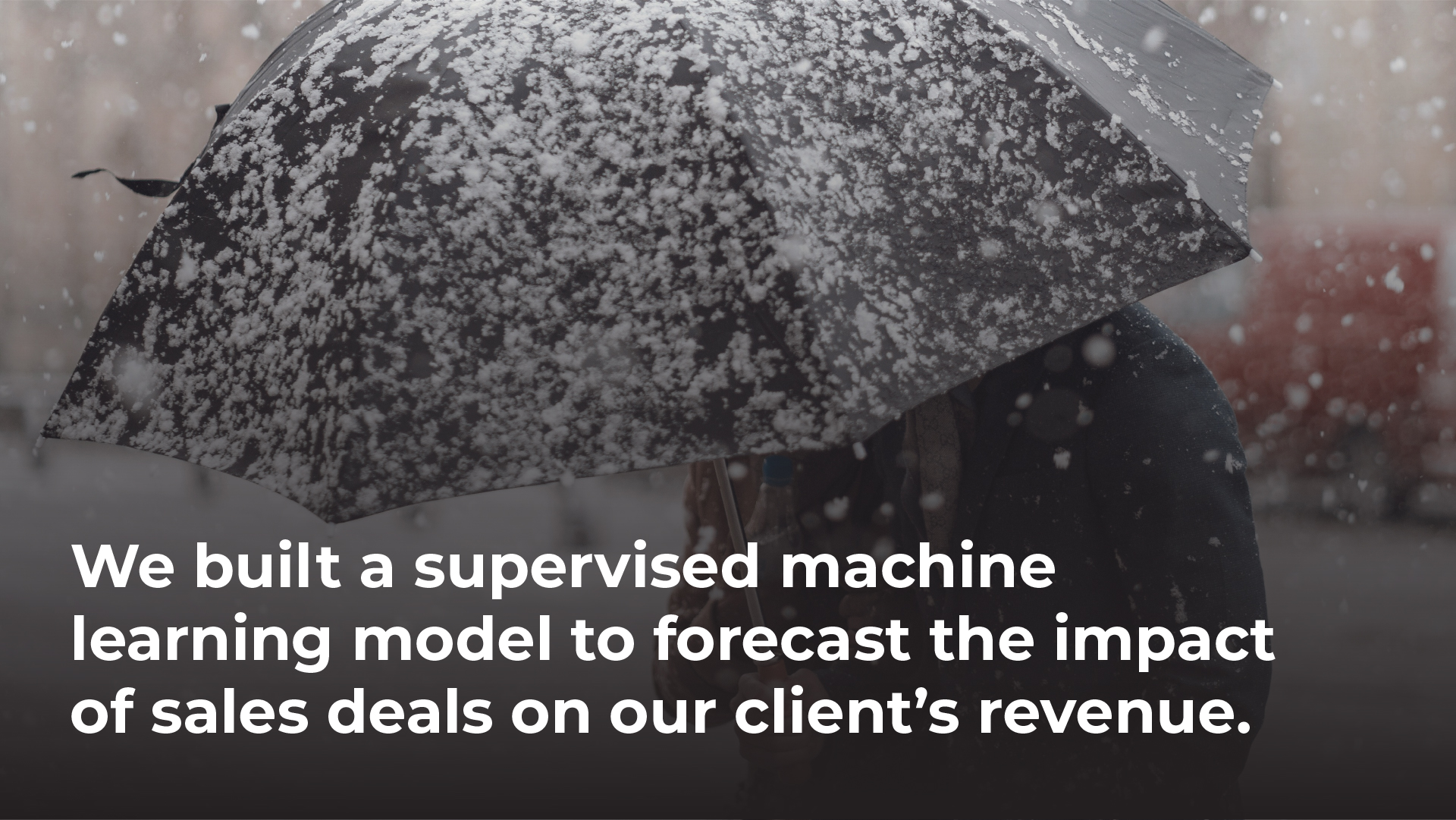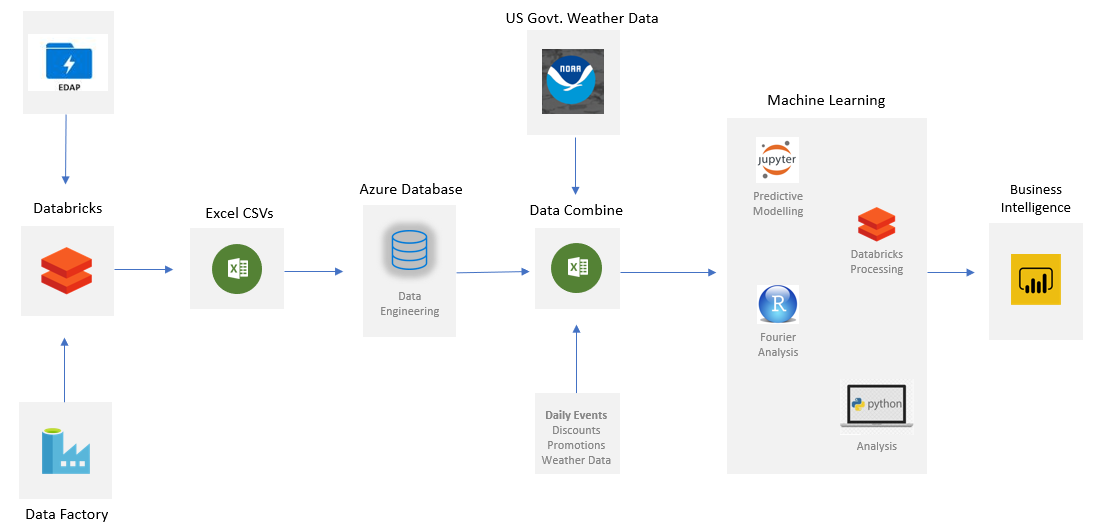
Business Case:
Our client, a multinational food and beverage chain, operates thousands of retail stores and generates billions of dollars of annual revenue. Our client needed to understand the impact of weather, promotions, discounts, product launches, holidays, and other events on sales. The client’s existing predictive sales model routinely underestimated sales volume at both the aggregated and daily level. Our client also needed to better understand the causes of seasonal and daily spikes in sales.Key Challenges:
Our Solution:
We built a Sales Forecasting Engine on Microsoft Azure Databricks that allowed our client to quickly and accurately predict sales.
Solution Design:
We worked with the
client’s marketing operations and finance teams to collect and analyze their
sales data, promotion and discount data, and store events data. We also used National
Oceanic and Atmospheric Administration (NOAA) historical weather data from the
US government to develop the weather model. We extrapolated the historical data
and used application programming interfaces (APIs) to connect the data to our
machine learning (ML) model to predict weather.
Highlights:
 |
| Figure 1: Architecture of Forecasting Engine |
Business Outcomes:
Our supervised ML
predictive model empowered our client to analyze the impact of weather,
promotions, discounts, product launches, holidays, and daily events on sales
and execute business decisions accordingly. The model also identified the delay
between an event and the seasonal spike, which enabled our client to maximize
sales following an event.
Our hybrid ML model is far more accurate than the previous ML model. The prediction runs on an aggregated and daily basis, and the model retrains itself once actual sales figures are injected into the model.
Our model’s Mean Absolute Percentage Error (MAPE) value was 0.09—as compared to
the previous model’s MAPE value of 0.13. (a lower value indicates greater
accuracy).
